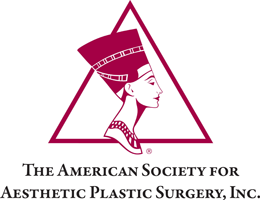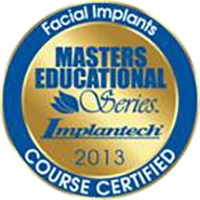- About Temple Implants
- Who is a Good Candidate for Temple Implants Surgery?
- What are the Different Types of Temple Implants?
- What Can I Expect from Temporal Implant Surgery?
- Recovery from Temple Augmentation
- Potential Risks and Complications of Temple Implant Surgery
- How Long Will the Results of Temporal Augmentation Last?
- Common FAQs About Temple Implants
About Temple (Temporal) Implants Procedure
The temple area is one that is fairly new in the treatment algorithm. Most, who treat this area, do so with fillers and fat grafting. The reasons that this area is focused on is that the temple area can present as a hollowing which can create a “skeleton-like” appearance mainly due to atrophy of fat. Many surgeons who, perform facelifts, fail to properly identify this area and as a result the facelift may be incomplete.
Fillers and fat grafting is performed by many and are touted as the ideal way to solve this area; however, the results can be uneven and unsatisfactory due to the lack of longevity and technical expertise of the individuals performing them. This is where a temporal implant is a one procedure which solves this problem with excellent results. The surgery can be performed even under local anesthesia with a small incision in the posterior hair and even above the ear in a near “scar-less” procedure in a single procedure.
The implant is a soft solid silicone implant and is placed above the temporals muscle. The implant is placed either for cosmetic surgery of the face or post traumatic defects during reconstruction.
The costs of performing repeated fillers and fat grafts far exceed the surgical cast of one procedure where the temple implants are placed.
The risks are minimal and even reversible should a patient change their mind.
Temple implants are a type of facial implant that are placed on either side of your head. They are an excellent option for men and women who do not like the way aging has decreased their facial volume, as well as those who have naturally hollow or narrow temples.
Temporal implants are soft, flexible and made from silicone. Their purpose is to create fullness and an aesthetically pleasing facial shape. The nice thing about temple implants is that they can be customized to fit each client, allowing for magnificent results that are normal in appearance.
You can learn more about temple implants by scheduling a consultation with Dr. Shahin Javaheri.
Who is a Good Candidate for Temple Implant Surgery?
The best candidates for temple implant surgery are those who:
- Are unhappy with decreased facial volume
- Want to fill in hollow or narrow temples
- Want to bring youth and health back to their face
- Prefer an oval- or pear-shaped face (compared to a square face)
As always, it’s important to consider your personal risk factors. Cosmetic surgery is still surgery, so the best candidates are healthy, non-smoking individuals with no underlying health risks. We realize that not everyone has perfect health, so please discuss potential risk factors with Dr. Shahin Javaheri during your consultation. He can help determine if you are a good candidate for temporal implants.
What are the Different Types of Temple Implants?
Temple implants are made from silicone. This is the preferred choice because silicone is soft, flexible and has a natural looking appearance. However, there are other options available for filling out hollow temples aside from implants.
One common alternative is a dermal filler. Dermal fillers are gel-like substances that are injected beneath the skin to smooth lines, soften creases and restore lost volume. Unfortunately, dermal fillers aren’t always a solution for restoring hollow temples because some people need so much filler, it’s not practical. Additionally, several syringes are often required for each temple area in order to get the proper shape and volume. This makes dermal fillers more costly than people realize.
It’s also worth mentioning that dermal fillers are not permanent like temporal implants are, and they are less precise. However if you’re not ready for a temple implant procedure, talk to Dr. Shahin Javaheri about dermal fillers as an option for correcting temple hollowness.
What Can I Expect from Temporal Implant Surgery?
A temporal implant procedure is performed under general anesthesia or local anesthesia in an outpatient setting. During the procedure, Dr. Shahin Javaheri will place a small, vertical incision in front of and above the ear. Once healed, the incision is practically invisible because it’s hidden behind the ear.
For men who are balding, the incision can be placed behind the ear as well. Once the incision is made, the silicone implant is inserted into the hollow area on both sides. The incision is then closed up and you can return home for healing. Neither the incision or the implant will be visible. The procedure takes about 15-30 minutes on each side.
Recovery from Temple Augmentation
Luckily, temple implants are fairly easy to recover from. Most clients report some bruising and swelling for the first few days and weeks. Some do experience discomfort, but it’s usually treatable with an over-the-counter pain reliever. Usually within 2-3 days, clients are able to return to work.
The reason why recovery from temple augmentation is straightforward is because the implants are muscle based, not bone based. Once the incision heals, you are fully healed and can enjoy the final results of your surgery. Of course, make sure that you follow all instructions from Dr. Shahin Javaheri, as well as schedule a follow-up visit. This ensures you’re healing correctly and not at risk for infection or other compilations.
Potential Risks and Complications of Temple Implant Surgery
Even though temple implant surgeries are relatively low risk, there are still some complications to be aware of. After all, cosmetic implant procedures are still surgeries. Dr. Shahin Javaheri will go over your personal risk factors based on your age, health and healing ability.
In general, these are the most common risks and complications that can occur with temple implant surgery:
- Infection
- Wound breakdown
- Hematoma
- Hypertrophic scar formation
- Injury to the temporal branch of the facial nerve
To reduce your risk for complications, it’s important to choose a reputable plastic surgeon who has experience performing these types of surgeries.
How Long Will the Results of Temporal Augmentation Last?
Facial implants are considered permanent and won’t shift anywhere. The implants are made from silicone rubber, which feel like bone. The benefit to using this material is that it conforms to the underlying anatomy and can’t be seen or felt through the skin. Even though silicone implants are permanent, you can easily have them removed with local anesthesia.
Common FAQs About Temple Implants
Here are some of the most common questions our clients have about temple implant surgery.
What are Temple Implants?
Temporal implants are helpful for people who have sunken or hollow temples. They are placed below the skin on the temples to restore fullness. This gives the face a more pleasing shape that is youthful and vibrant. The surgery is relatively easy and takes about 30-60 minutes from start to finish. Temple implants are permanent unlike dermal fillers that only last a short time.
How Much Do Temple Implants Cost?
Permanent temple implants cost starts around $4,500, though this number depends on various factors such as your surgeon’s experience and the location of the outpatient facility. The good news is that temple implants are permanent so you don’t have to continue shelling out money as you might for dermal fillers. Insurance does not typically cover temple implants because they are cosmetic, but you can finance the procedure.
How Do I Know Whether Temple Implants are Right for Me?
The best way to know if temple implants are right for you is to schedule a consultation with Dr. Shahin Javaheri. We can discuss your goals for surgery and which procedure will achieve the results you want. Generally speaking, good candidates for temple implants are healthy, non-smoking individuals who have hollow or sunken temples.
What is the Recovery Like after Temple Implant Surgery?
Temple implant surgery has an easy recovery. While there are some risks to be aware of, taking care of the incision and choosing a qualified surgeon will reduce potential complications. Most clients are able to return to work and normal activities within 2-3 days. You can expect some minor discomfort and swelling as the incision heals.
How Do I Book a Consultation for Temporal Implants?
To book a consultation for temporal implants, contact Dr. Shahin Javaheri today. This will give you the opportunity to discuss your options and review the risks and benefits to temporal implants. Our consultations are always friendly and informative so contact us today to discuss your needs.





